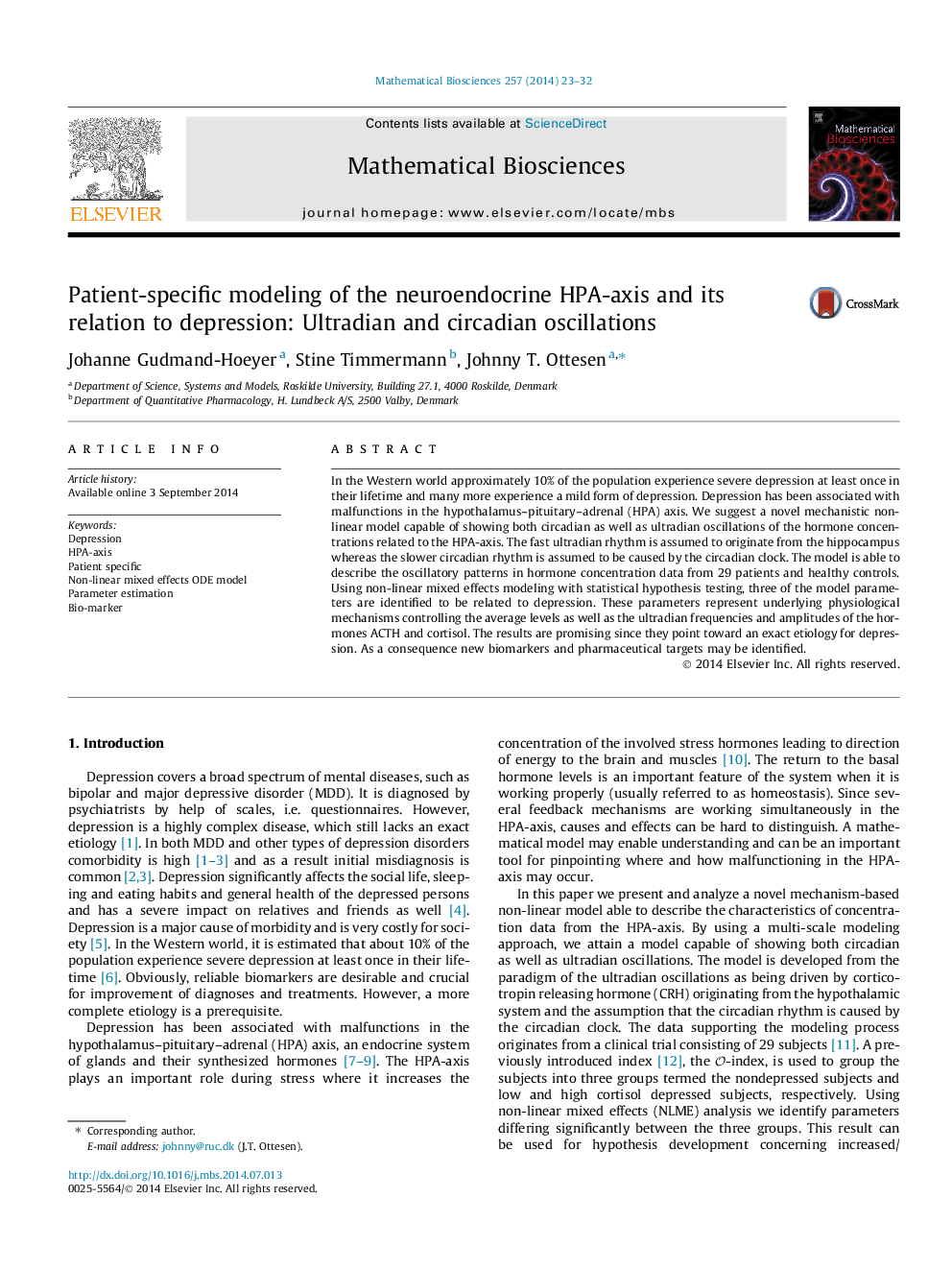| Article ID | Journal | Published Year | Pages | File Type |
|---|---|---|---|---|
| 6371995 | Mathematical Biosciences | 2014 | 10 Pages |
Abstract
In the Western world approximately 10% of the population experience severe depression at least once in their lifetime and many more experience a mild form of depression. Depression has been associated with malfunctions in the hypothalamus-pituitary-adrenal (HPA) axis. We suggest a novel mechanistic non-linear model capable of showing both circadian as well as ultradian oscillations of the hormone concentrations related to the HPA-axis. The fast ultradian rhythm is assumed to originate from the hippocampus whereas the slower circadian rhythm is assumed to be caused by the circadian clock. The model is able to describe the oscillatory patterns in hormone concentration data from 29 patients and healthy controls. Using non-linear mixed effects modeling with statistical hypothesis testing, three of the model parameters are identified to be related to depression. These parameters represent underlying physiological mechanisms controlling the average levels as well as the ultradian frequencies and amplitudes of the hormones ACTH and cortisol. The results are promising since they point toward an exact etiology for depression. As a consequence new biomarkers and pharmaceutical targets may be identified.
Related Topics
Life Sciences
Agricultural and Biological Sciences
Agricultural and Biological Sciences (General)
Authors
Johanne Gudmand-Hoeyer, Stine Timmermann, Johnny T. Ottesen,
